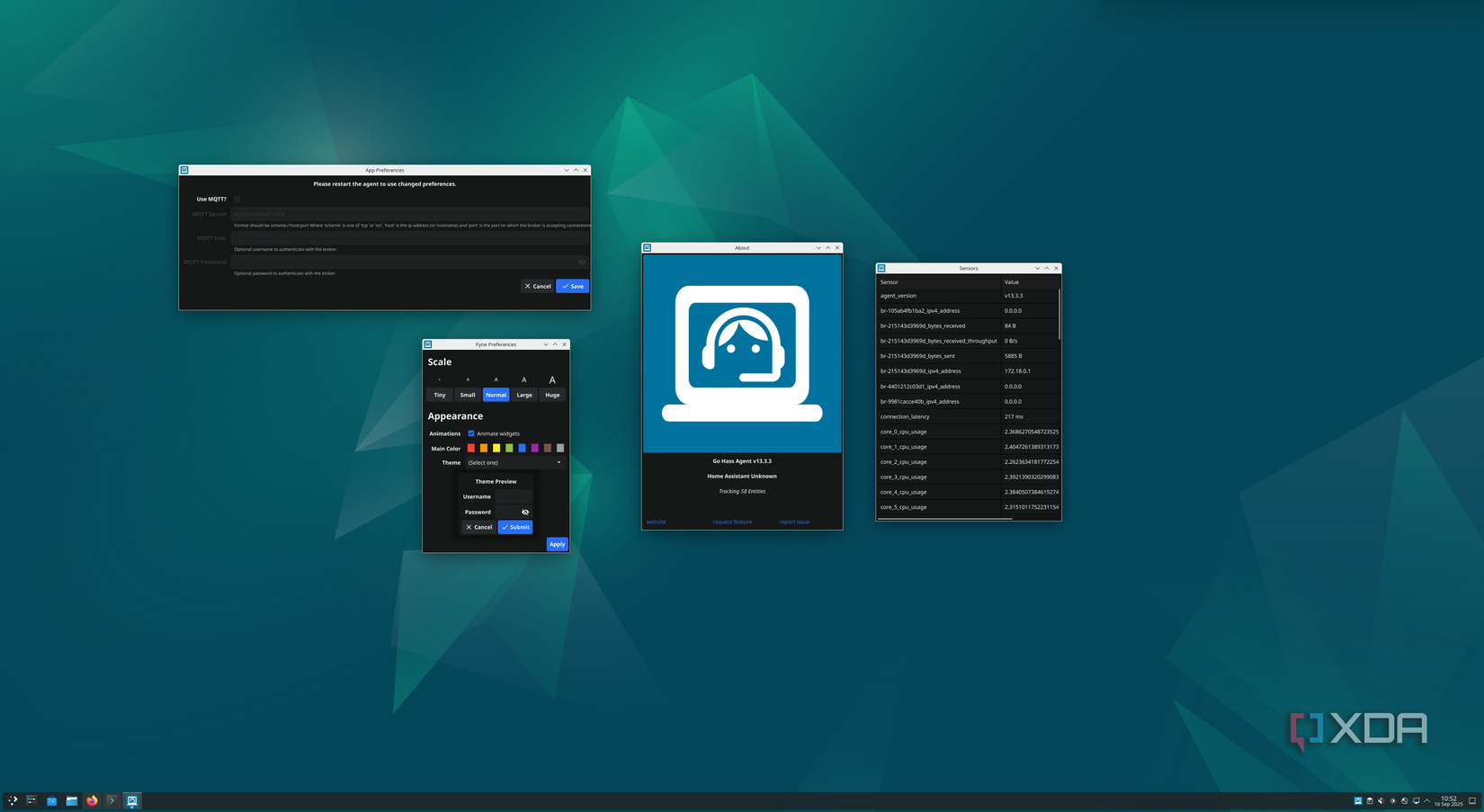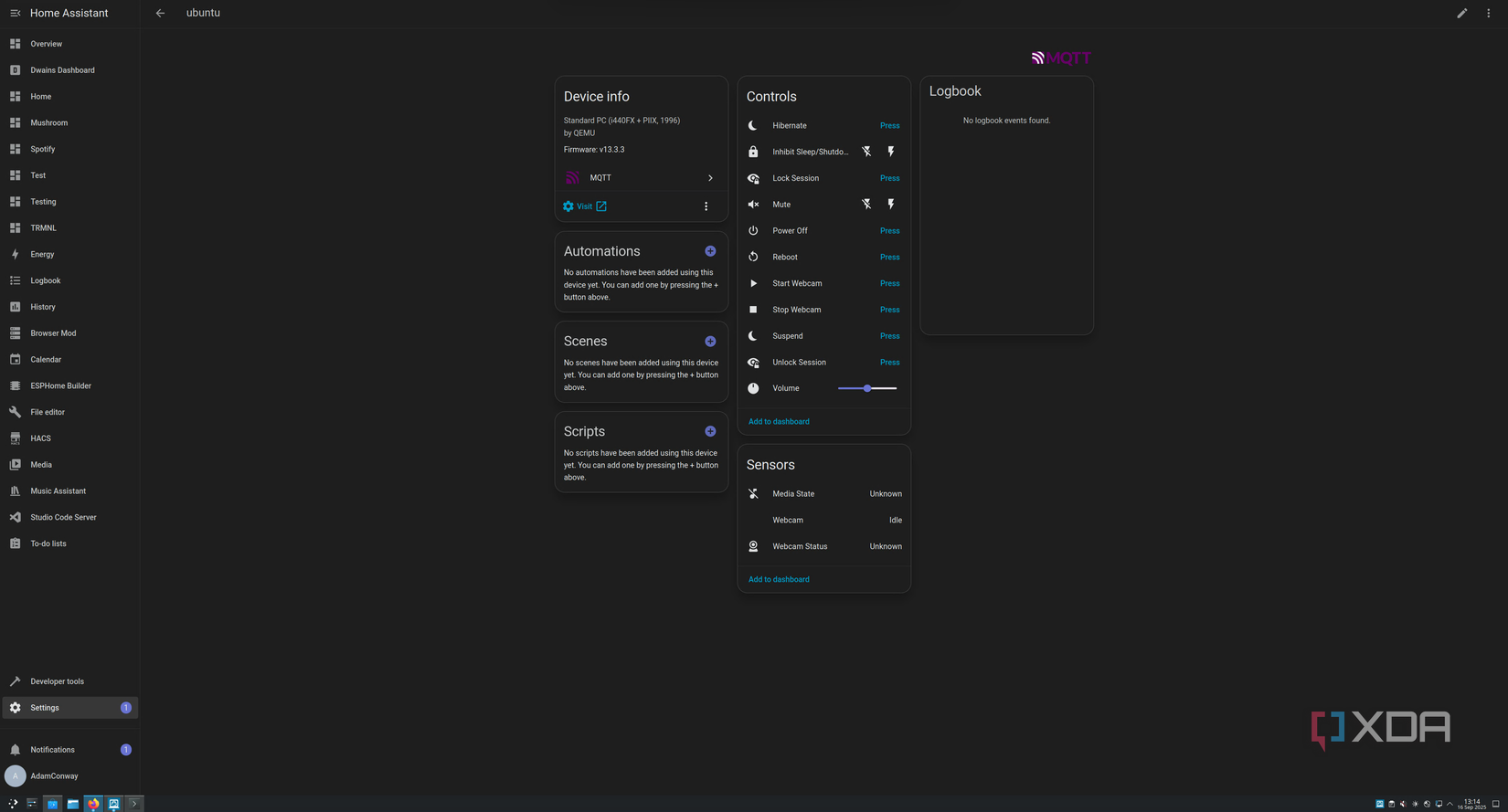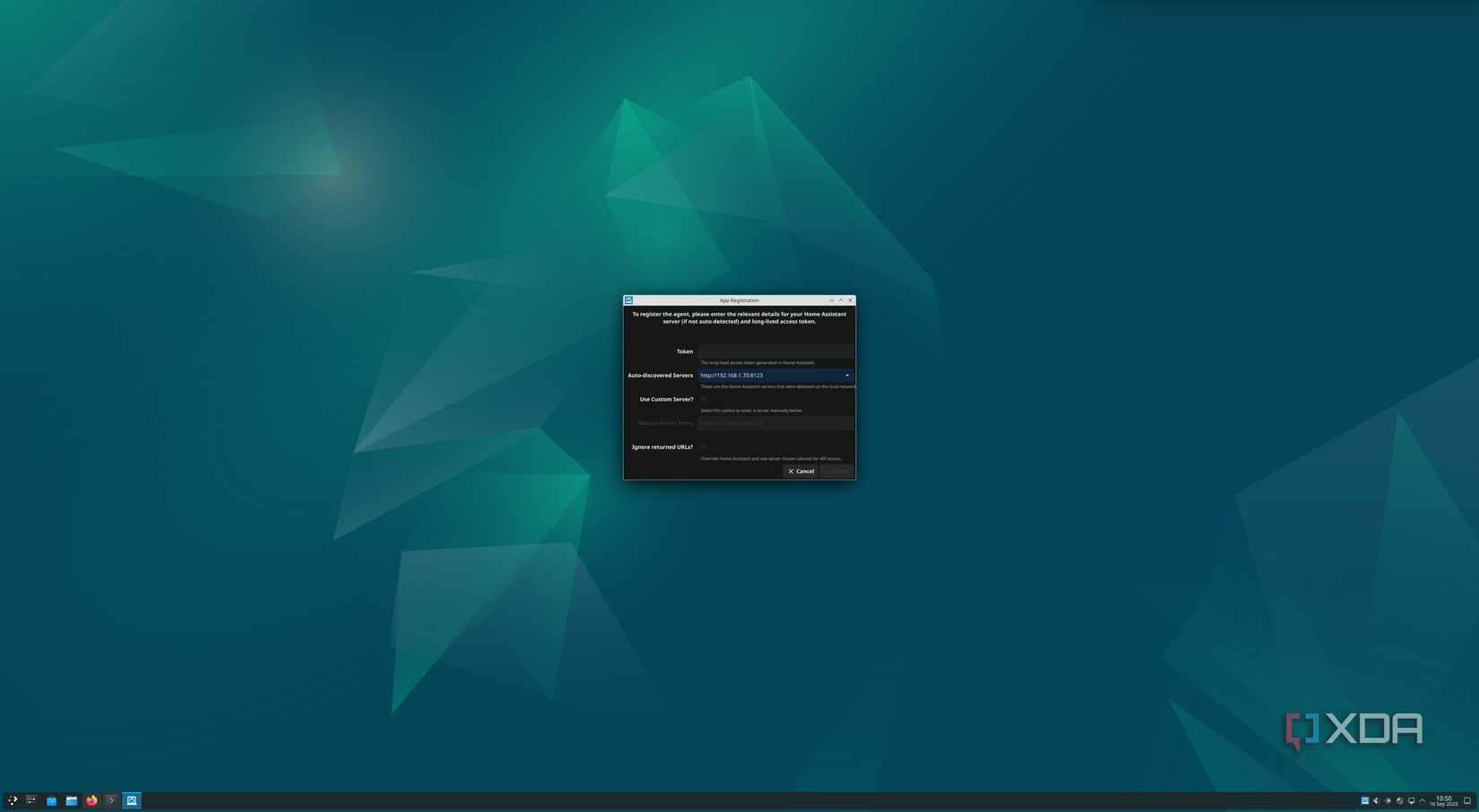Home Assistant is a powerful way to connect all of your devices, self-hosted services, and build automations between all of them. However, connecting your computer on an operating system level can be a confusing endeavor. HASS.Agent is the best way to do that on Windows, but a recent Windows Defender update has seen the most recent stable version of the application become unusable thanks to the expiration of the certificate that the WinRing0 driver uses. For Linux users who could never use HASS.Agent, though, there’s a great alternative that’s even better than HASS.Agent, and it’s called Go HASS Agent.
First and foremost, despite being an application targeted at Linux users, it can actually build and run on Windows, it just won’t support most of what actually makes it useful. That’s because all of the monitoring is built for Linux users, but you could, theoretically, add your own functionality with ease for Windows to report the same data. When you install it and authorize the client, it’ll be added as a “Mobile App” to Home Assistant, where you can see all of the reported data. With MQTT support, too, it adds additional buttons and features.
If you use Linux, Go HASS Agent is a must for your Home Assistant install, and manages to do everything and more that HASS.Agent could do on Windows. If you’re still stuck using Windows, there’s a beta build of HASS.Agent 2.2.0 that removes the Libre Hardware Monitor library.
Go HASS Agent is the best Linux reporter for Home Assistant
It has everything
Go HASS Agent is an incredibly simple application written in Go, and it can report practically everything you can think of from your system to your Home Assistant instance. There are webcam controls, login screen controls, media, disk reporting, CPU usage, and so much more. You can configure practically everything, and you can even send data back to the Linux host with ease.
For example, you can send a notification back to the Linux host using MQTT, as Go HASS Agent will subscribe to the “gohassagent” MQTT topic to listen for controls. All you need to use is the “mqtt.publish” service in Home Assistant. You can even create your own sensors using scripts, so that you can report your own data if it’s not natively supported by Go HASS Agent.
As for the reason these sensors are split across the Mobile App integration and the MQTT integration is due to a Home Assistant limitation, as not all of these controls can be shown in the one place. It’s one of the only minor issues I have with the application, as the rest is phenomenal and better than even the Windows-only HASS.Agent.
However, what you do get are a lot of controls across the two of these. The full list can be found on the Go HASS Agent GitHub, but here are just a few:
- Media controls (the player must support MPRIS)
- CPU usage
- Power profiles
- Networking state
- Disk usage
- Memory usage
- CPU vulnerabilities
- Hardware sensors
Most of these use the Linux D-Bus for monitoring and reporting, which allows for inter-process communication on Linux. While one could port the same functionality to Windows (and the application has been designed to be extensible in that manner), it hasn’t been done just yet. Given that this is a community project, though, someone may do so in the future.
If you’re a Linux user, it’ll work out of the box. When you start it, it will scan your network to look for Home Assistant instances. If it can’t find your instance, you can enter the IP address manually to log in. You can then configure MQTT, restart it, and it will report additional details to your MQTT server too and allow for commands to be sent.
Once installed, you can immediately start using it!
Windows users still have options
I’ve used HASS.Agent on Windows for quite a long time, and I use the Home Assistant application on my Mac. On my Mac, it’s basically just the iPad version of the Home Assistant app, and the HASS.Agent Windows application is more or less its own thing that reports to an MQTT server. It works quite similarly, though, and you can send notifications and other information, too.
If you’re a Linux user, I highly recommend trying out Go HASS Agent. It took me five minutes to set up, and an MQTT server is optional if you don’t have one set up. The only difficulty I’ve faced is getting Spotify show up as a media player, though I discovered it has limited MPRIS support which may be the cause. I’m unsure if the agent can properly read the data from Spotify to identify what I’m listening to, but then that’s a Spotify issue, not a Go HASS Agent problem.
Otherwise, Windows users can install the beta version of HASS.Agent, which removes the dependency on WinRing0 for collecting hardware details. As a result, it now can’t read GPU temperature, but all other features are present alongside new ones. That includes the following new sensors:
- HumanPresence
- NamedActiveWindow
- AccentColor (for identifying Windows accent colors)
On top of that, you get MQTT WebSocket support, button helpers, and more. For Linux users who previously relied on IoPC to report their system data to their MQTT server for processing in Home Assistant, there’s now an even better option that mirrors what HASS.Agent can do, too. Hopefully it can get Windows support in the future for those who want to use it!





